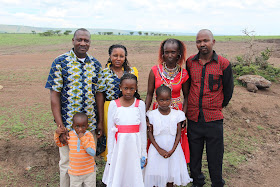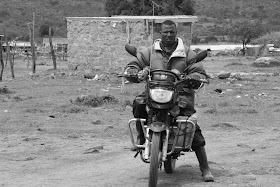So here is the scoop. I wanted to write all about different cultures and their wedding practices. But I think I want to let you all see the wonders for yourselves.
I do encourage you to read about traditional weddings within the Maasai, Kikuyu, Luo, Luya, Kisii and all remaining 37 tribes in kenya. I have found them quite interesting compared to traditional perspectives in the western worlds.
I had the privilege to attend a Maasai wedding for the Kamaamia Family.
It was extravagant!
It was more than extravagant.
It was phenomenal!
It was eye opening!
Fantastic! Flamboyant! Guady!
Splendiferous..
And all the above.
My feelings can not be described with words. So I'll show you in Pictures.
(All photos are patent and should not be duplicated for personal use unless given permission. Asante)
I present The Handsome Fisi Guys:
Benson Pion, Joseph Kamaamia, Jared Grimmer and Chief Pion
Looking Snazzy Dazzy there Jared.
Model, Chief Pion, shows off his wedding attire made by Anne's Fundi.
Model, Benson Pion, shows off his wedding attire made by Anne's Fundi.
We got a flat tire on the way. So I let the guys get a little dirty before the wedding.
We arrived!!! Time to get this wedding started. We were a part of the entourage. The family cars would line up all decorated and follow in the Bride and Groom.
Kimberly aka KBRrrrr was looking up to par.
These two little girls looked dashing in their white dresses.
The Kamaamia Family Relatives.
Today Joseph's niece was going to get married.
Vivid.
Contemplation
Decision
Agony
Family
Mama Joseph, a respected elder in the Kamaamia Family.
Wanders
There were 30 colorful motorbikes ready to bring in the Bride.
Jared found his twin at the wedding.
"Ahay Baba, Ashay Baba, Ashay Baba"....The stunning lads danced in synchrony to the openning wedding song, "Thank you Father, Thank you Father, Thank you Father, for this wedding day."
The girls were looking quite well.
The Bride's Maids
Mototo
Gathering
Patience
The Bride, Christine Kamaamia
The Father and the Bride
Filomina Kamaamia , Jared and Chief
Jared and I had a blast and it was experience I will never forget.
Asante Sana everyone who was apart of making this day such a blessing.
This experience was life changing.
I hope to be a part of many more weddings and Maasai celebrations to come.



















































